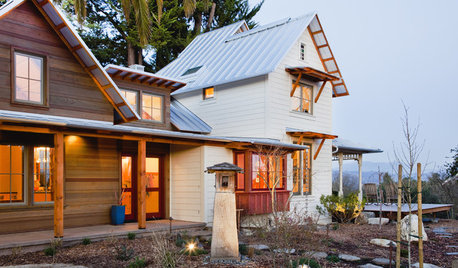Grafting to top work persimmon - question
eciton
9 years ago
Related Stories

EDIBLE GARDENSHow to Grow 10 Favorite Fruit Trees at Home
Plant a mini orchard in fall, winter or early spring to enjoy fresh-off-the-tree fruit the following year
Full Story
FARMHOUSESHouzz Tour: A Farmhouse Branches Out
New windows and a dining room addition help a Northern California home thrive right along with its bounteous garden
Full Story
EDIBLE GARDENSSummer Crops: How to Grow Tomatoes
Plant tomato seedlings in spring for one of the best tastes of summer, fresh from your backyard
Full Story
DECORATING GUIDESSo Your Style Is: Coastal
Bright and breezy, coastal style transports you straight to the beach no matter where you call home
Full Story
DECORATING GUIDESDecorate With Intention: The Art of Compromise
You're modern, he's traditional? Someone's collection has gotta go? These 10 steps can help keep the peace when decorating tastes clash
Full Story
KITCHEN CABINETSKeeping Cabinet Color on the Down Low
Give just base cabinets a colorful coat for a kitchen sporting character and a spacious look
Full Story
WINTER GARDENINGPruning Secrets for Exquisite Roses
Encourage gorgeous blooms year after year with this time-tested advice on how to prune your rosebush in winter for health and shape
Full Story
DECORATING GUIDESHouzz Tour: Traditional Meets Transitional in a Townhouse
A Southern California couple downsizes, and their designer helps them push past traditional boundaries
Full Story
FARM YOUR YARDIf You Have Room for Only One Fruit Tree ...
Juice up a small garden with one of these easier-care or worth-the-effort fruit trees for a mild climate
Full Story
SMALL SPACES11 Design Ideas for Splendid Small Living Rooms
Boost a tiny living room's social skills with an appropriate furniture layout — and the right mind-set
Full StoryMore Discussions








Tony
lucky_p
Related Professionals
Canton Landscape Architects & Landscape Designers · Newcastle Landscape Architects & Landscape Designers · McKinney Landscape Contractors · Centereach Landscape Contractors · Clark Landscape Contractors · Commack Landscape Contractors · Danvers Landscape Contractors · Lebanon Landscape Contractors · Mastic Beach Landscape Contractors · Pomona Landscape Contractors · Pompton Lakes Landscape Contractors · Rancho Santa Margarita Landscape Contractors · Tehachapi Landscape Contractors · Vashon Landscape Contractors · Palos Heights Landscape ContractorsMonyet
Monyet
forestandfarm
ecitonOriginal Author
forestandfarm
ecitonOriginal Author